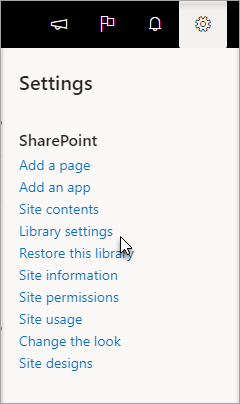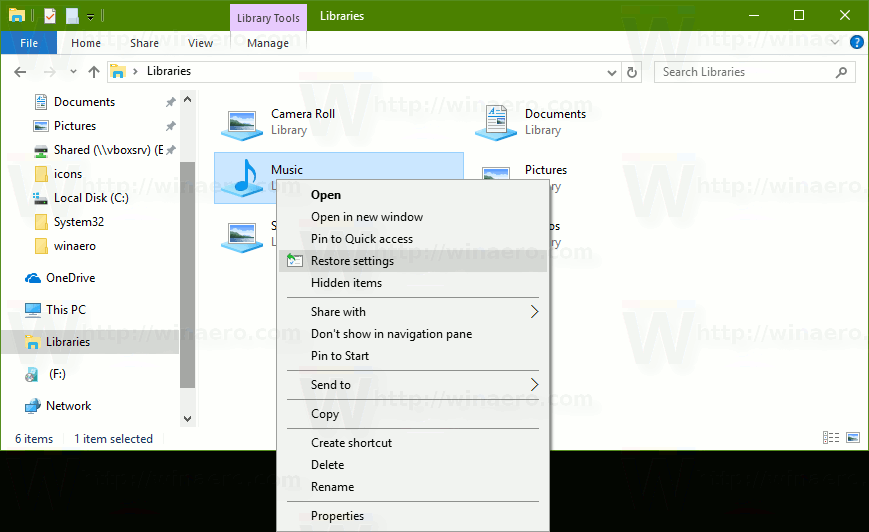Libraries Settings Menu
. For Library Name, enter the public display name for your library. Choose a meaningful name that will help you and other course team members to identify the contents of the library. For example, “Level 200 Math Problems”. For Organization, enter the identifier for your university. For example, enter HarvardX or MITx.
Do not include spaces or special characters. For Library Code, enter an identifier for your library that is unique within your organization. This code becomes part of the URL for your library, so do not include spaces or special characters in the code. Click Create. You see the new library, to which you can now add components. For details about adding components to a library, see. The system-generated Library ID for the new library appears in the sidebar.
Libraries Settings Menu
Edit a Library After you create a library, the only change you can make to the initial library information is to the name. However, at any time, you can make changes to the components in your library, including adding or deleting components or editing the settings of components.
For details about editing the contents of a library, see. To change the name of a library, follow these steps. Log in to Studio. Click Libraries, then click the library whose name you want to edit.
Click the Edit icon next to the library name. The library name field becomes editable. Add Components to a Library To add new to your library, follow these steps. Log in to Studio. Click Libraries, then click the library that you want to add components to. Click Add Component, then click the component type that you want to add under Add New Component.
For more information about the types of components you can add to a library, see these topics. After you add a component to a library, you can edit its settings. These settings are retained when the component is selected from the library and used in a course. When a component from the library is used in a randomized content block, you can further edit the component as it exists in the unit, without affecting the original version in the library.
For details, refer to. View the Contents of a Library To view the entire contents of a library in Studio, follow these steps. Log in to Studio. Click Libraries, then click the library whose components you want to view.
The components in the library display in the order in which they were added, with the most recently added at the bottom. If your library has more than 10 components, additional components are shown on other pages.

The range of the components shown on the current page, and the total number of components, are shown at the top of the page. You can navigate through the pages in these ways:. Use the buttons at the top and bottom of the list to navigate to the previous and next pages. At the bottom of the page, you can edit the first number in the page range. Click the number to place your cursor in the field, then enter the page number you want to jump to. To view the list of matching components in the library, see. To view the randomized content as a student would see it, see.
Give Other Users Access to Your Library When you create a library, you are automatically assigned an Admin role in that library. You can give other Studio users access to your library. Depending on the level of access that you give them in the library, additional library users can view and use library content in courses, edit library content, or add and manage other library users. All users to whom you give library access must be registered with Studio and have an active account.

These are the levels of access for libraries:. User – Users can view library content and can use library components in their courses, but they cannot edit the contents of a library. Staff – Staff can use library components in their courses. In addition, as content co-authors, they have full editing privileges in a library. Admin – Admins have full editing privileges for a library.
In addition, they can add and remove other team members from library access. There must be at least one user with Admin privileges in a library. Add Staff or Admin Access The levels of access for libraries are hierarchical. You can add new library members only with the User level of access, after which you can give them the Staff level of access. You can give the Admin level of access only to people who already have the Staff level of access. To give a library member a higher level of access to the library, follow these steps. In Studio, click the Libraries tab and locate your library.
From the Settings menu select User Access. On the User Access page, locate the user to whom you are giving additional privileges.
Remove Staff or Admin Access After you have granted users Staff or Admin access, you (or other Admin library users) can reduce their levels of access. To remove Staff or Admin access from a library user, follow these steps. In Studio, click the Libraries tab and locate your library. From the Settings menu select User Access. On the User Access page, locate the user whose access level you are changing. If she currently has Staff access, click Remove Staff Access. If she currently has Admin access, click Remove Admin Access.

The user’s display listing is updated to indicate their new role.
Why Would I Want To Do This? RELATED: There are three components to the Plex Media Server experience. There’s the media itself (like your TV shows), there’s, and then there are the Plex client applications you access the server from via, your iPhone, or other devices.
Because you aren’t directly browsing the folders that contain your videos, it is critically important that Plex Media Server’s database be up to date. If you’re away on a business trip, for example, trying to catch up on your favorite shows, but Plex Media Server hasn’t updated to include the latest episodes, you’re out of luck. Until the library is updated, you won’t be able to watch them.
Thankfully, the Plex Media Server software has multiple ways you can ensure your media list is always current including manual updating and multiple ways to automate the update process. How to Manually Update Your Library The simplest method is to manually update your library. Even if you follow the later steps in this guide and completely automate the update process, you should always be familiar with the manual update process as it’s a great way to force an immediate update. To manually update your Plex library, log into the web control panel for your Plex Media Server. On the main page, select one of your libraries from the left hand navigation pane, as seen below, like your “TV Shows” library.
Within the library, click on the circular arrow icon in the upper right corner. This will trigger a manual update for that library, and Plex Media Server will rescan the directories assigned to that library. Repeat this process for all other libraries (e.g. Movies and Music) you wish to update.
How to Automatically Update Your Library Manual updating is great if you need to force the update right that second, but for ease of use and really frictionless user experience, you really want to enable automatic updating. Not only is automatic updating supremely convenient for you, but it’s practically a necessity if you have other people in your house. If Plex is always up to date then you, the manager of the media server empire, won’t be pestered with questions about whether a favorite show is up to date. There are several ways you can automate library updates, and you’ll find all of them in a single menu within the settings of your Plex Media Server. Click on the Settings tool icon in the upper right corner of the Plex web interface. Within the Settings menu select the “Server” tab along the top navigation bar and then select “Library” from the left hand navigation panel.
To see all the available options we’ll be highlighting, you need to click on the “Show Advanced” button to fully expand the library options. With the advanced options visible, you’ll see the following entries in the Library settings menu: There’s several options here and you should consider each one based on where your media is stored and your update needs. Automatic Updates: The Best Option For Nearly Everyone The top option, “Update my library automatically”, is the ideal one. Nearly every Plex user should check it. The only time automated library updates aren’t a viable solution is for Plex users with their media stored on a different computer from the Plex Media Server program (since the automatic detection of folders doesn’t typically work for folders on a network share). Checking “Run a partial scan when changes are detected” is an additional option that can be paired with the automatic library update.
This option will decrease library update time and amount of system resources used for library updates. It’s not a huge deal on a powerful system, but its a time saver regardless (and it’s quite useful if your Plex Media Server hardware is underpowered). Scheduled Updates: Great for Media On Network Shares If you find that automatic library updating doesn’t work for your system, you can always use the “Update my library periodically” setting to set an update schedule. This option works for both local files and files located on a network share (that is, a computer other than the one Plex Media Server is installed on), since it manually scans the entire directory structure at the frequency you specify. You can specify the update frequency in increments as low as every 15 minutes all the way up to once a day. Automatic Trash: The Housekeeping You May Not Want Finally there’s a small consideration regarding library cleanup.
By default, the option “Empty trash automatically after every scan” is checked. If you have a fixed library (e.g. All your media is on a specific server on fixed internal drives) it’s a good idea to leave this checked.
That way if you delete a bunch of stuff from your media server, Plex will automatically tidy up after you and remove all the entries for that media. If, however, you use external drive that are sometimes removed from the Plex Media Server computer, you have media shared on the Plex Media Server that is located on a network share of another computer that isn’t always on, or some other situation where media you wish to keep in your library is not always online, do not check the “Empty trash” option. If you do, every time Plex runs an update scan and fails to see the offline media it will delete it (only to turn around and rescan the media, download all the metadata, and so on, the next time it’s online). Once you have automatic updating configured just the way you want, you can sit back and enjoy one of the best benefits of Plex Media Server: always up-to-date and centralized management of your entire media collection.